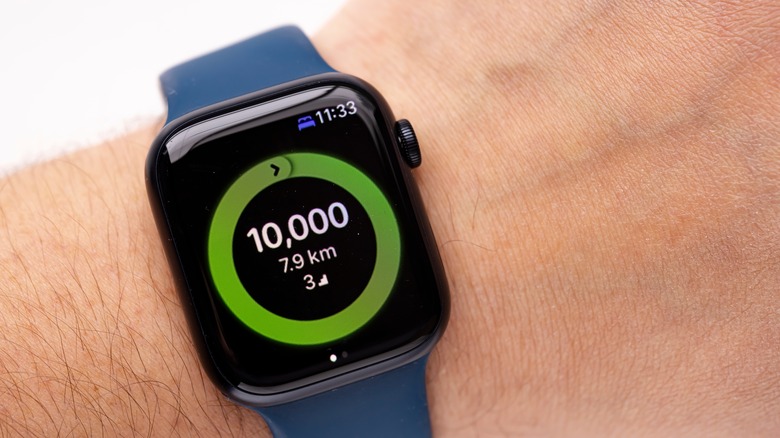Why 10,000 Steps A Day Really Is The Magic Number For A Host Of Health Benefits
You've probably heard that aiming for 10,000 steps a day can be beneficial for your overall fitness, and the Department of Health and Human Services (HHS) recommends this amount for improved health. The organization explains that increasing physical activity reduces the risk of developing type 2 diabetes, high cholesterol, and becoming overweight. It also improves strength, endurance, and functional capacity. In addition, 150 minutes of moderate-to-vigorous activity per week reduces the risk of death by 33%.
Walking briskly is considered a vigorous exercise, and the National Health Service (NHS) explains that this relates to about three miles per hour. Another indicator of brisk walking is if you cannot sing a song without taking a breath, representing your heightened level of physical activity — but is there something special about walking 10,000 steps? Two recent studies shed light on why this could be the magic number when it comes to reaping a multitude of health benefits.
More walking means more activity
As it turns out, 10,000 steps are beneficial because they represent a higher level of activity, and that is key to improved health. An observational study, published in the JAMA Neurology, found a link between higher step counts and the risk of dementia. The U.K.-based study followed 78,430 participants between the ages of 40 and 79. It lasted from February 2013 to December 2015 with a follow-up in May 2022. The results showed that getting just under 10,000 steps (9,800) per day was linked with a 50% reduction in dementia. Benefits were seen at lower step counts, too — findings suggested that getting even 3,800 steps was associated with a 25% lower incidence of dementia.
However, the risk of dementia isn't the only health benefit associated with walking 10,000 steps in a day. A companion study, published in JAMA Internal Medicine, found that this number of steps was associated with a lower risk of 13 types of cancer and cardiovascular diseases. Researchers observed that for every 2,000 steps, the risk of early death dropped between 8% and 11%. Moreover, steps taken at a higher intensity resulted in greater benefits.


